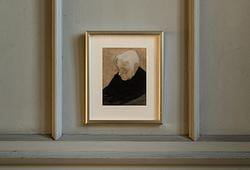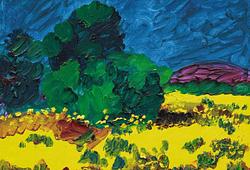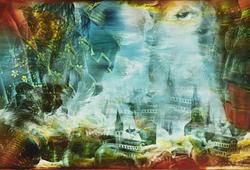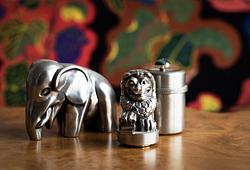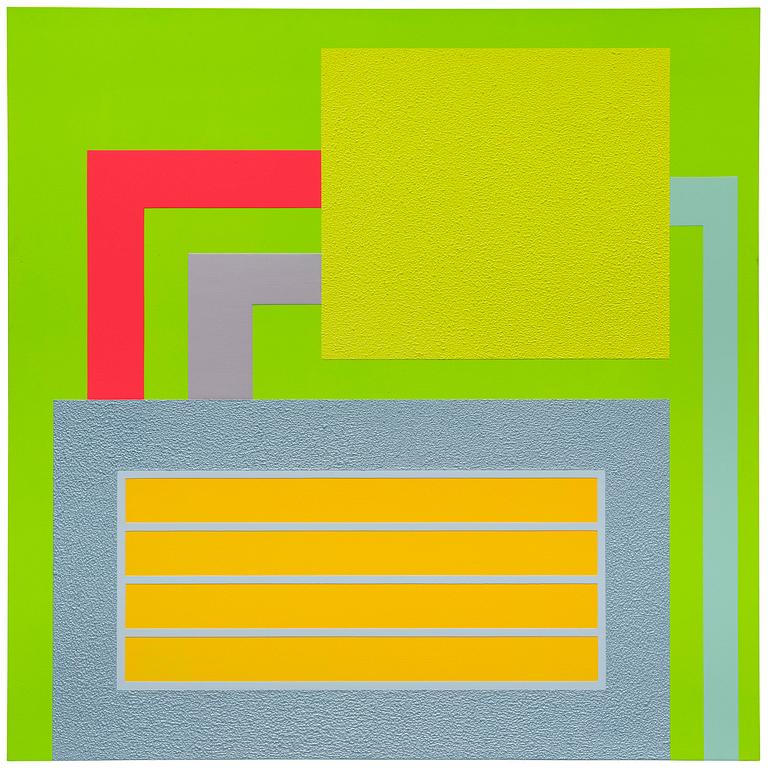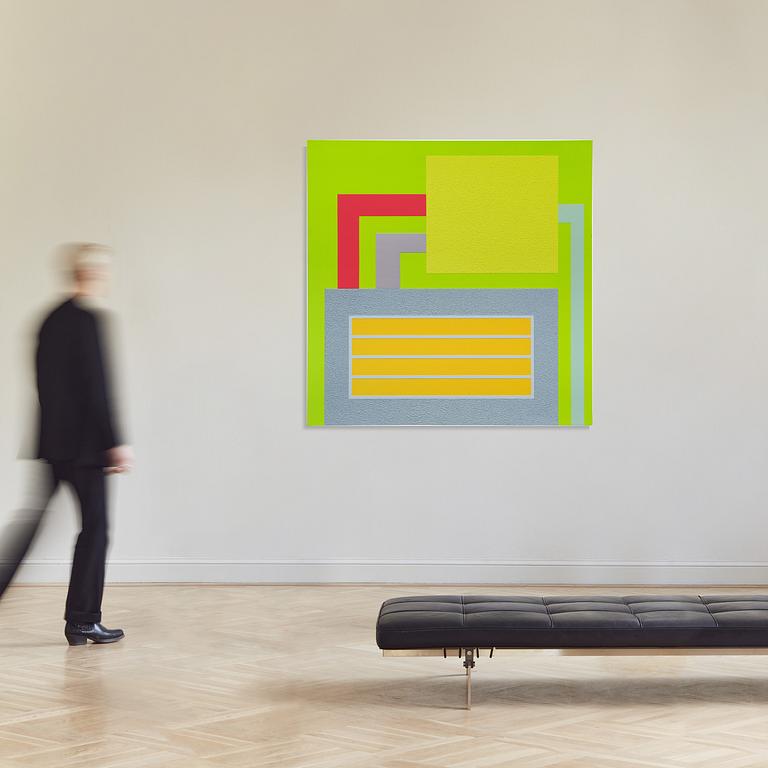Peter Halley
"Ta Ra Rum Pum"
Signed Peter Halley and dated 2007 verso. Acrylic, fluorescent acrylic, and Roll-A-Tex on canvas 183 x 183 cm.
Provenance
Galerie Forsblom, Stockholm.
More information
Peter Halley’s painting "Ta Ra Rum Pum" exemplifies the artist’s signature geometric abstraction, where luminous color and textured surfaces become vehicles for social and cultural commentary. Since the 1980s, Halley has employed the lexicon of “cells,” “prisons,” and “conduits” to reflect on the architecture of modern life—both its physical structures and its invisible systems of communication and control.
Here, rectilinear forms in neon green, blazing red, and industrial gray interlock with radiant yellow panels. The sharply delineated geometry, enhanced by the granular surface of Roll-a-Tex, creates a dialogue between flatness and tactility, restraint and exuberance. Halley’s pictorial worlds, often mistaken for purely non-representational, in fact evoke code systems, circuit diagrams, and urban planning grids. Using neon colors, geometric motifs, and industrial materials, he builds relief-like surfaces that mirror the structure of contemporary society.
This work can be directly compared to "Monster House" (2007), which employs the same barred “prison window” composition but in a brilliant red and pink palette.
Peter Halley explains how his work evolves over time in an interview with Peter Doroshenko, executive director Dallas Contemporary, 2020:
"Believe it or not, my work is a kind of diary. As you know, I employ a very small vocabulary of symbols in my work - diagrammatic cells and prisons that are connected by conduits, all set on a flat colored field. Each painting evolves from those that came before, but as I draw, I never know what will happen next as I compose and rearrange these elements.
When I look back at my old paintings, I can clearly remember what was going on at the time they were painted - both in my personal life and in our culture as a whole."




